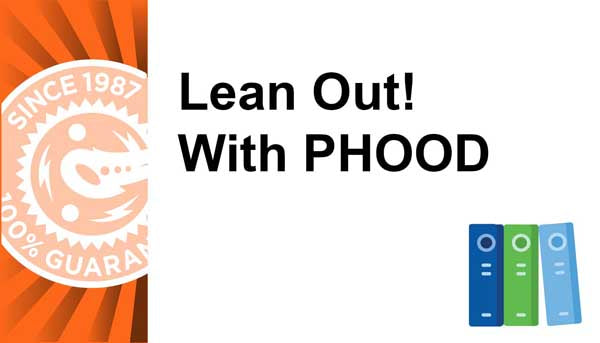By William Misner Ph.D.
INTRODUCTION
Everyone should be thinking now about how to achieve early "fighting weight" before the competitive season arrives. The holidays tend to add 5-9 lbs extra body weight, which tend to slow down ascents and prolonged performance significantly. Every year this extra "padding" seems to grow rather than disappear completely. One of the best nutritional examples of lean fighting weight is Lance Armstrong who consistently defeated great athletes in the Tour de France such as Jan Ullrich, whose off-season weight-gain is considered performance limiting.
A SYNOPSIS OF PRINCIPLES + HELPFUL HINTS
We scientists are not ignorant that it is difficult to motivate non-scientists to read or attempt to interpret lengthy collected research data that conclude findings, associations, and generalizations. For those of you who want to know what works, what does not work, and how to naturally settle into your "fighting weight", the following Principles and Helpful Hints are listed:
EFFECTIVE WEIGHT LOSS PRINCIPLES
Total calorie intake is the cause of weight gain. Total calorie expenditures are the cause of weight loss. A calorie-restriction weight loss intervention must include balance menu, safe if dietary supplements are used, and gradual weight loss, followed immediately by a planned commitment to permanent healthy "Lifestyle" change.
The effectual weight management program emphasizes lifestyle-training modifications with each of the following goal PRINCIPLES:
GRADUAL CHANGE to healthful eating patterns characterized by increased intake of whole grains, seeds, nuts, fish, fruits, and vegetables, with a decrease intake of high saturated fat foods, and processed empty-calorie foods.
NONRESTRICTIVE EATING is based on internal regulation of hunger pangs, which reduces calorie overdose by increasing frequency of small-portion nutrient-rich, calorie-sparse plant foods.
MAKE PHYSICAL ACTIVITY ENJOYABLE emphasizing and gradual well tolerated to achieve a minimum of 30 minutes exercise daily.
SET REALISTIC GOALS that focus on healthful eating practices and increased physical activity. Goals include halting weight gain first, stabilizing weight second, and weight loss lastly as a natural outcome of activity's effect generating a small calorie-deficit. The end reward is significant impact effect on health.
EAT A VARIETY OF FOODS: Choose small portions from whole grains (6-11 servings), vegetables (3-5 servings), and fruits (2-4 servings) including (2-4 servings) from a non-animal protein source (fish, nuts, beans, legumes, sprouts, seeds). Limit amount of food to small portions. Limit foods that lack nutrients or are high in fat and processed sugar.
BALANCE CALORIE INTAKE WITH ACTIVE CALORIE EXPENSE. Complete a minimum of 30 minutes moderate aerobic physical activity daily.
FOOD CHOICES: WHOLE GRAINS, VEGETABLES, AND FRUITS: These include high complex carbohydrate whole grain bread, whole grain cereal, whole grain pasta, rice, potatoes, corn, broccoli, Brussels sprouts, carrots, onions, garlic cloves, cauliflower, pinto, navy, kidney, and black beans.
FOOD CHOICES: CHOOSE LOW TOTAL FAT, LOW SATURATED FAT, AND LOW CHOLESTEROL FOODS: Some foods and food groups are too high in fat. Fats and oils, and some types of desserts and snack foods that contain fat provide more calories than necessary nutrients. Certain foods should be limited: milk, meat, eggs, poultry, processed grains. These foods elevate homocysteine, saturated fat, and blood sugar resulting in calorie excess. "Limited" implies consuming small portions no more than 1-2 times per week.
FOOD CHOICES: FOODS LOW IN SIMPLE SUGAR AND LOW GLYCEMIC INDEX: Evidence shows that foods high in simple sugar or with a high glycemic index contribute to weight gain, hyperactivity, and potentially insulin resistance syndrome, or diabetes. The most common type of diabetes occurs in overweight adults. Avoiding sugars or high glycemic foods alone will not correct overweight. Weight loss and weight control depends on total calorie intake and calorie deficits created by the level of physical activity.
FOOD CHOICES: CHOSE LOW SODIUM FOODS: Sodium plays an essential role in regulation of fluids and blood pressure. Many studies in diverse populations have shown that a high sodium intake is associated with higher blood pressure. Most evidence suggests that people at risk for high blood pressure reduce their chances of developing this condition by consuming less salt or sodium.
TELL ME WHAT TO DO AND WHAT TO DO NOT!
Most people will naturally migrate to their natural-healthy body weight by regular daily exercise following the DO's and DO NOTS' of this weight management lifestyle:
1. DO reduce carbohydrate calorie intake by 30-50%.
2. DO increase plant foods, vegetable and fruit intake by 25-33%.
3. DO replace fluid losses starting with 1-1.3 fluid ounces per kilogram or 0.5-0.7 fluid ounces liquid per pound body weight per day.
4. DO limit calorie intake later in the day; consume last meal 3 hours prior to bedtime. (This does not imply that calorie timing neglects total daily calorie intake.)
5. DO reduce excess fat calories from meat, dairy, or dairy byproducts.
6. DO prolong aerobic exercise or frequent short anaerobic exercise to increases the rate of weight loss daily.
7. DO restrict calorie weight-loss periods to 3 weeks length resulting in small gradual weight loss then include a reward of 3-7 days "Vacation" options to a menu plan that includes both no calorie-restriction and no calorie-excess controls.
8. DO limit weight loss rate to 0.5-1.0 pound weight loss each week.
9. DO consume a minimum 1,500 (+/- 300) calories per day during calorie restriction periods only.
10. DO limit fatty meats and processed food calories.
11. DO consume a variety of nutritionally balanced foods in calorie-restriction protocols.
12. DO set realistic weight loss goals that result in slow, moderate body mass change (avoid setting immediate unrealistic goals).
13. DO NOT adopt temporary dietary protocol apart from a permanent "Lifestyle" change.
14. DO NOT impose hunger severity initiating stages of starvation.
15. DO NOT allow rapid weight loss, which has been implicated in the fast weight regain in the off-season.
16. DO NOT take stimulants, steroids, or diuretics.
17. DO NOT diet with excess protein above 1.6 grams protein per kilogram ( > .75 grams/lb) body weight.
18. DO NOT diet with an excess intake of foods rich in saturated fat from dairy, animal, or poultry byproducts.
19. DO NOT consume excess amounts of packaged or fast foods.
20. DO NOT attempt a weight management lifestyle without require regular daily exercise.
21. DO NOT eat foods with processed Trans Fatty Acids (TFA) also called partially or completely hydrogenated vegetable fats; found in many packaged foods and processed baked goods.
22. DO NOT DRINK ALCOHOL: Alcoholic beverages supply high calories but few nutrients. These effects of alcohol alter judgment and can lead to dependency and a great many other serious health problems. Experimental evidence from several metabolic studies showed a suppression of lipid oxidation by alcohol and thus the enhancement of a positive fat balance. The non-oxidized fat is preferentially deposited in the abdominal area. The experimental metabolic evidence suggests that the consumption of moderate amounts of alcohol has to be accounted for in the energy-balance equation and may represent a risk factor for the development of a positive energy balance and thus weight gain. Higher levels of alcohol intake raise the risk for high blood pressure, stroke, heart disease, certain cancers, accidents, violence, suicides, birth defects, and overall mortality (deaths). Alcohol may increase the risk of liver cirrhosis, inflammation of the pancreas, or damage to the brain and heart. Heavy drinkers also are at risk of malnutrition because alcohol contains calories that may substitute for those in more nutritious foods. Alcohol neutralizes anabolic hormone affects in muscles following exercise.
23. DO NOT eat excess calories above calorie expenditures more than 1 meal per week.
24. DO NOT eat high amounts of carbohydrates except after intense workouts.








